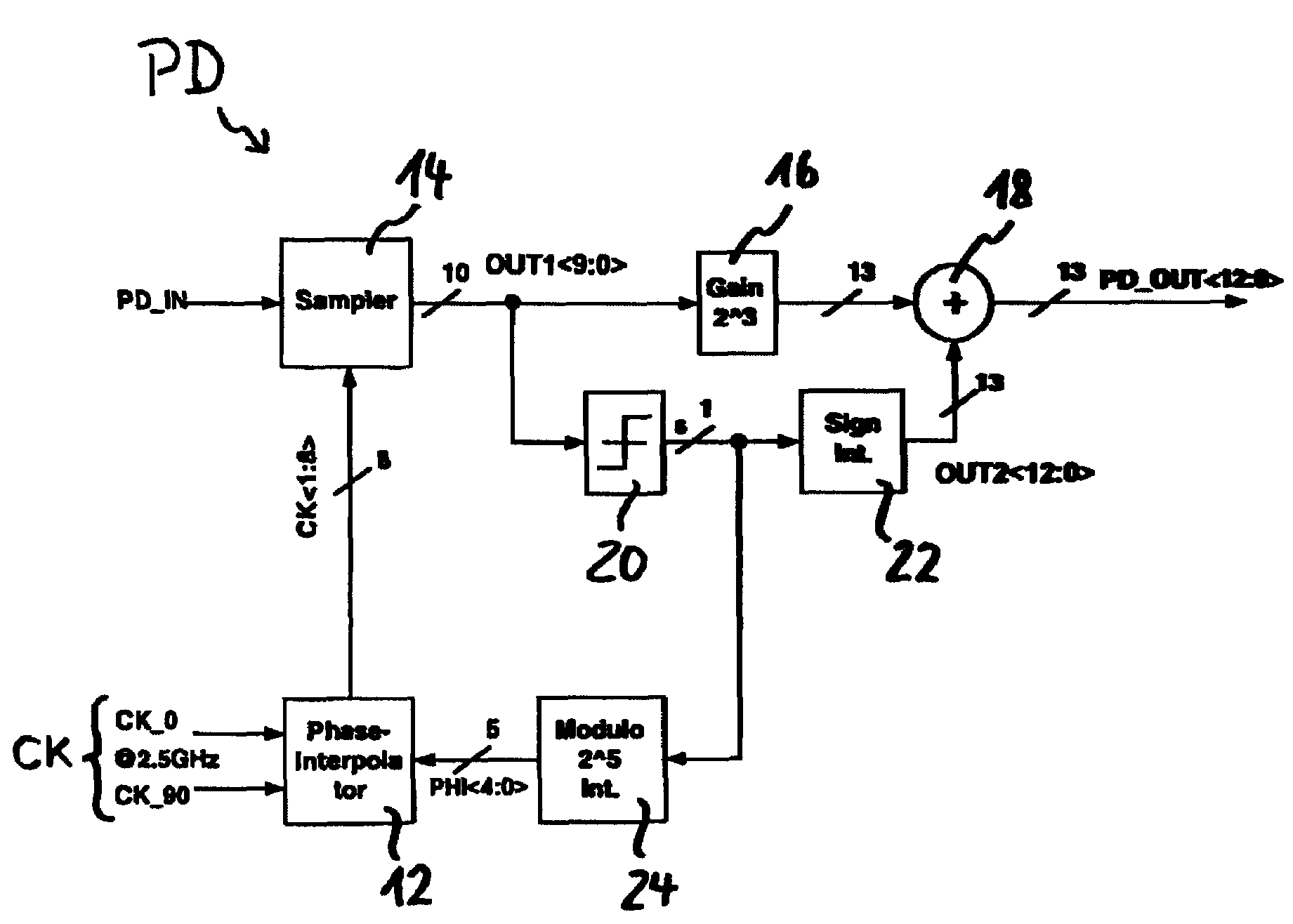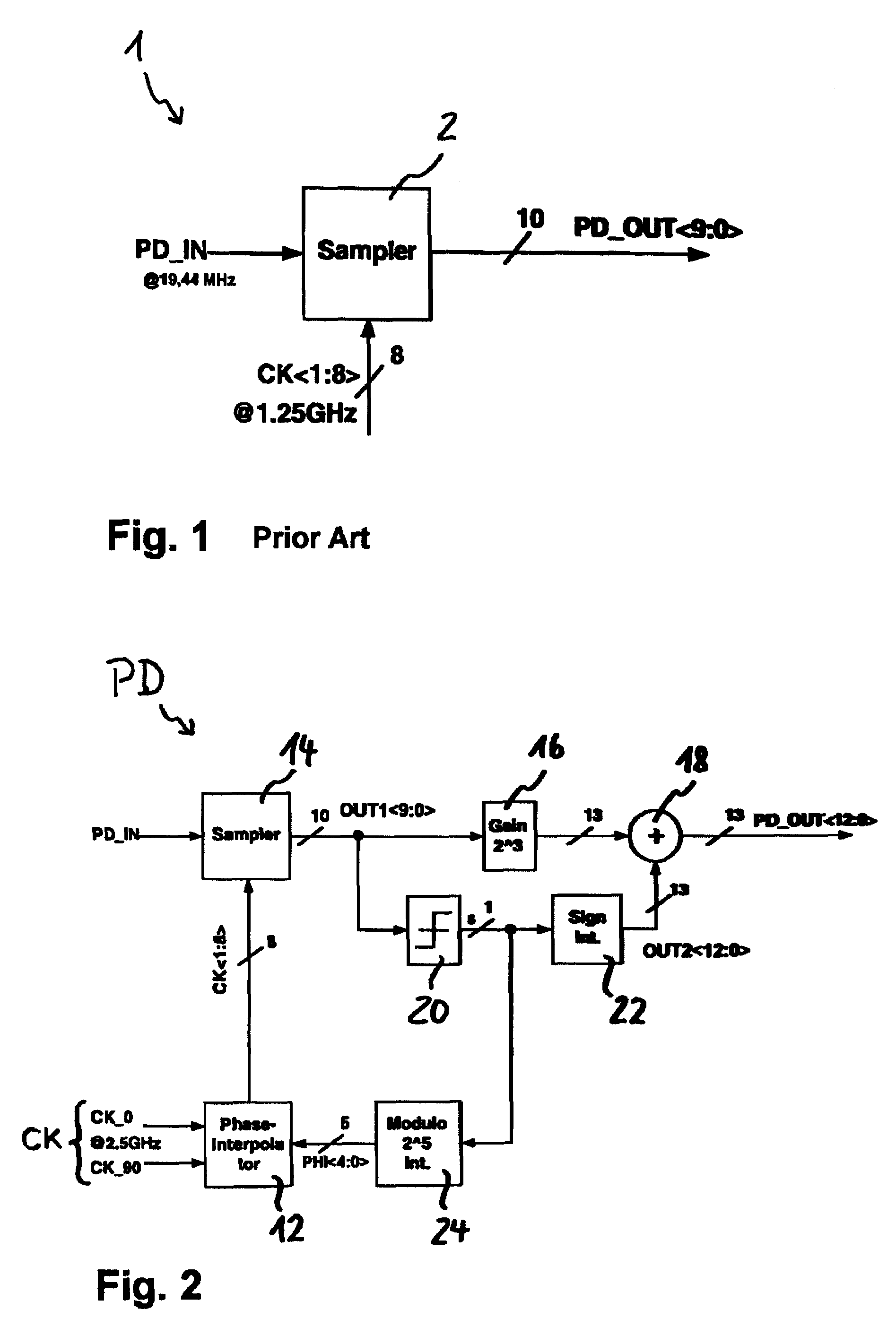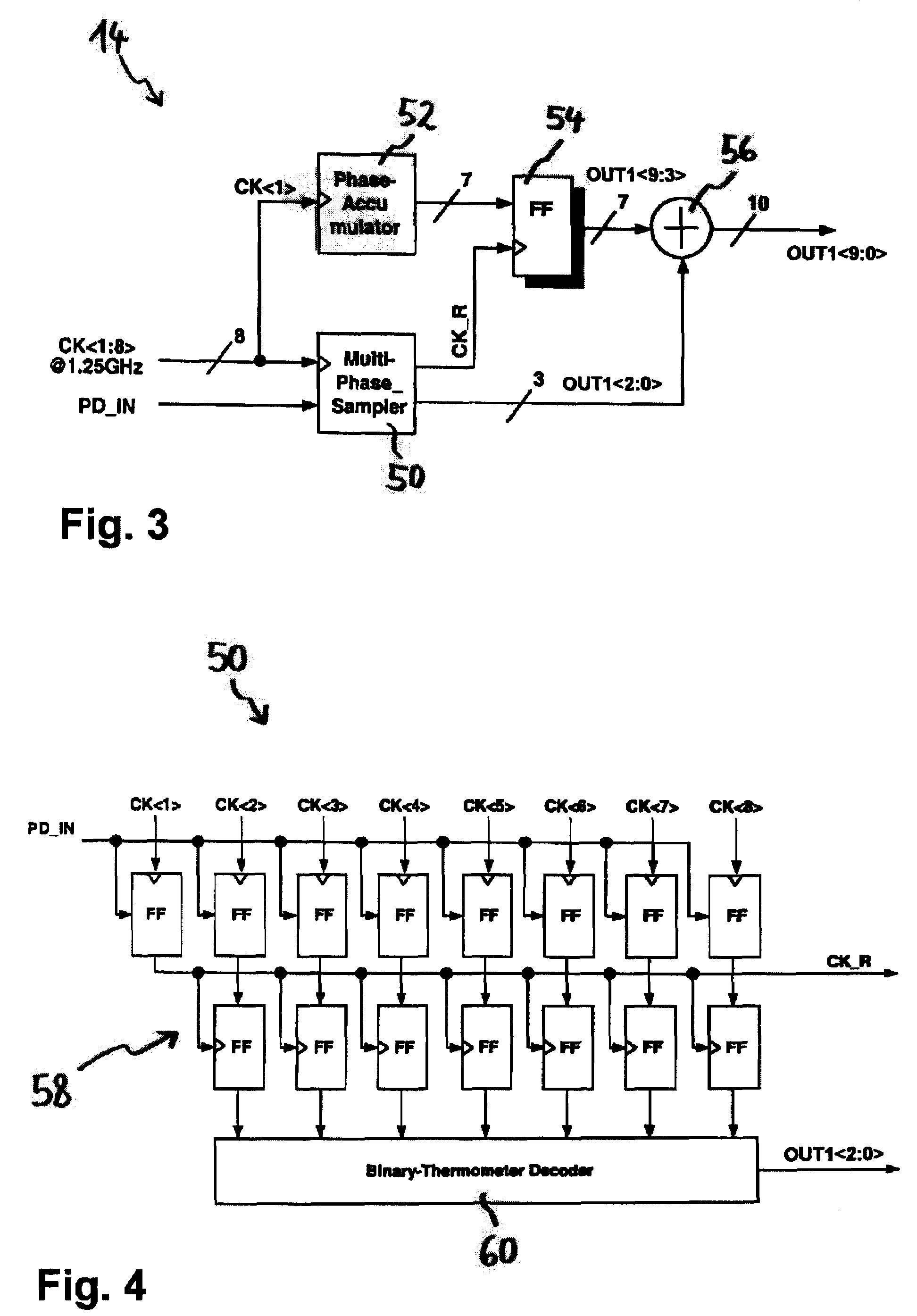Digital phase detector and a method for the generation of a digital phase detection signal
a digital phase detection and detector technology, applied in the direction of measurement devices, instruments, and angle demodulation by phase difference detection, can solve the problems of severely limited phase resolution thus achievable, and the speed of electronic components is limited in practice, so as to achieve high phase resolution
- Summary
- Abstract
- Description
- Claims
- Application Information
AI Technical Summary
Benefits of technology
Problems solved by technology
Method used
Image
Examples
Embodiment Construction
)
[0039]FIG. 1 demonstrates the function of a conventional digital phase detector 1 generating a digital phase detection signal PD_OUT, which specifies the phasing of an input clock signal PD_IN supplied to the phase detector 1 with reference to a higher frequency sampling clock signal CK supplied to the phase detector 1. The anticipated, or average, frequencies of the signals PD_IN and CK are specified in FIG. 1 in an exemplary manner, and in this example differ from each other by a factor of approximately 64. The phase detector 1 consists of a sampling device 2, which generates the phase detection signal PD_OUT in a binary representation. If a single phase sampling signal CK were to be used one here, then, in accordance with the selected “oversampling”, a signal PD_OUT with a resolution of 6 bits could be provided (26=64). In the example represented the sampling clock signal CK is however inputted with eight phases arranged equidistant to one another, which in FIG. 1 is symbolised ...
PUM
 Login to View More
Login to View More Abstract
Description
Claims
Application Information
 Login to View More
Login to View More - R&D
- Intellectual Property
- Life Sciences
- Materials
- Tech Scout
- Unparalleled Data Quality
- Higher Quality Content
- 60% Fewer Hallucinations
Browse by: Latest US Patents, China's latest patents, Technical Efficacy Thesaurus, Application Domain, Technology Topic, Popular Technical Reports.
© 2025 PatSnap. All rights reserved.Legal|Privacy policy|Modern Slavery Act Transparency Statement|Sitemap|About US| Contact US: help@patsnap.com



